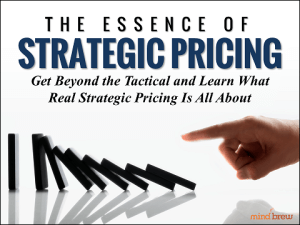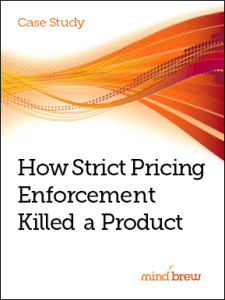A few years ago, Inc. magazine put together a list of the worst corporate mission statements. Most of them are so vague that it’s nearly impossible to tell what company wrote them.
For example, one company’s mission was “To create a shopping experience that pleases our customers; a workplace that creates opportunities and a great working environment for our associates; and a business that achieves financial success.” Any idea what that company sold? The mission statement was for a grocery chain.
Another company wanted “To help make every brand more inspiring, and the world more intelligent.” That’s an ambitious goal. Was it maybe for a cutting-edge marketing company or an artificial intelligence research firm?
No, it was a company that primarily makes office supplies and labels.
Most of the companies mentioned in the article have (understandably) either changed their mission statements or at least taken them offline after the piece was published. But examples of terrible mission statements—and businesses that don’t live up to their mission statements—abound.
Why then, would we suggest that you need a pricing mission statement?
When used properly, a mission statement can help you focus on what you should be doing. If someone proposes a new initiative, you can evaluate whether or not it advances your mission. If so, you can consider the proposal. If not, you can dismiss it out of hand. In this way, a mission statement can be a great filter that helps you eliminate time-consuming and ultimately unproductive tasks.
“Great,” your sarcastic inner voice is probably thinking. “Now I need to add writing a mission statement to the list of things I need to do today.”
You can stop right there, because we actually don’t want you to write a mission statement. Instead, we’d like to propose that you adopt one we’ve already written. It goes like this:
“Proactively creating the conditions under which better and more profitable pricing outcomes are the natural result.”
In our opinion, this statement succinctly summarizes what strategic pricing teams should be doing every day. And in fact, it’s actually how we define strategic pricing.
Maybe you’ll want to adapt that mission statement a little bit. That’s fine, but the key is the part about better pricing being a “natural result” of the conditions you have created.
Being a successful pricing team isn’t about putting people in place who are really good at dotting all the i’s and crossing all the t’s. Instead, pricing success comes from strategic thinking about how you can “stack the deck” so that your company inevitably gets great prices for its products as often as possible.
We discuss this big-picture thinking a bit more in the webinar There’s More to Profit than Price. It can help you expand your perspective beyond the narrow confines of your day-to-day workload, so that you can focus on the things that are really important to your company.
We hope that you do consider adopting our proposed mission statement for your pricing team. But in the end, it doesn’t really matter if our words become your “official” mantra or not. What is important is that your team focuses on strategy, and that you evaluate everything you do in terms of whether or not it is helping you achieve your strategic goals.















